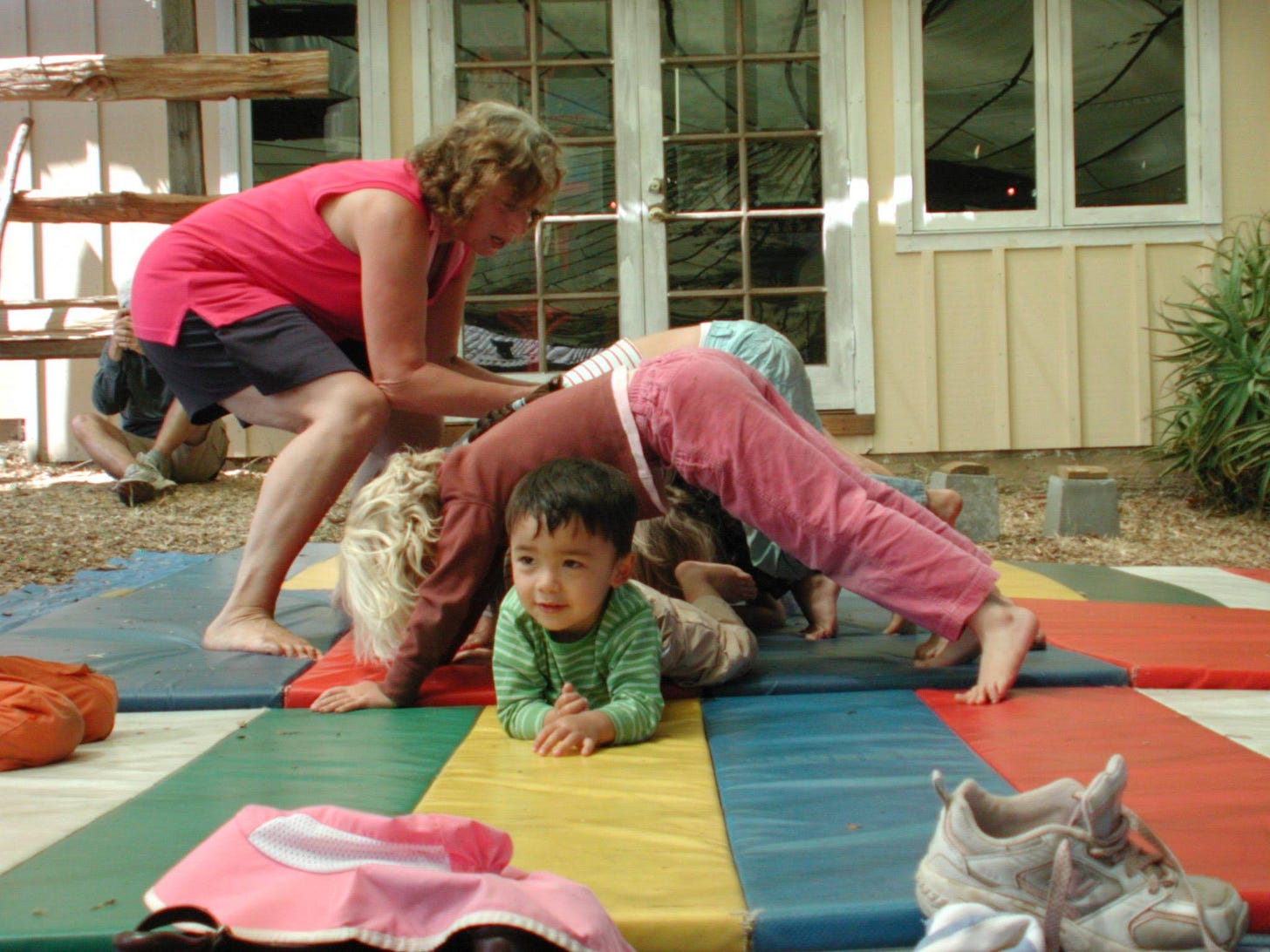Creating Characters for Movement
Who is Uffe the Gnome and how'd he get from the hills of Big Sur to schools, camps, early childhood circles and home play?
“Uffe the Gnome, Uffe the Gnome!” rang the chant through the halls at the San Francisco Waldorf School in the days leading up to the first children’s “circus”. It was the mid-1990s. I was still a novice movement teacher and deeply challenged to develop a curriculum of meaningful movement for my 3rd through 8th grade classes. Inspired by Spacial Dynamics classmates and other circuses in Waldorf [Steiner] schools around the world, I’d begun to introduce tumbling and acrobatics in my classes. But personally, I hated circuses! All that chaos and mugging: not my cup of tea! How could I make a likeable program come together into a unified whole? I needed some form, a character and a story line to carry the movement. And so, our peripatetic little adventurer, Uffe the Gnome, came to be.
On his first outing, Uffe has been invited to the royal Harvest Festival. Traveling through the forest, Uffe and his friend are faced with multiple impediments and adventures: cartwheeling leaves, lumbering giants, a sleeping bear, a winged Pegasus, a missing hat, and of course, a grand reception with the King and Queen!
With nearly 70 in the cast (grades 3-8) and 100 in the audience (kindergartens-grade 2), the characters and scenarios of Uffe and his friends took off. They rolled forwards, backwards and sideways, crawled on bellies and hands and knees, crab-walked, slithered, and climbed over and under one another. They balanced on one foot or two hands, skipped, hopped, jumped, danced, ran, and cartwheeled. They even challenged themselves with the oft-neglected movement skill of being still. Their movements imitated those of nature elements: rolling stones, tumbling leaves, towering trees, and forest dwellers large and small, real and imaginary.
At first, there was some opposition to this interpretation of a circus. Though precedents had been set at other Waldorf schools, my colleagues questioned the pedagogical value of the enterprise. Just how was it beneficial to the children’s development? A good question. I did a lot of homework to answer it, and the proof was “in the pudding” of the first performances.
Most importantly, the actual movements the children practiced, again and again, were those that helped them develop capacities for learning, not only for physical games and sport.
The social benefits were impressive: the entire school was involved, all at the same time, as the older students presented to the younger ones. The students were actively engaged in planning and building their own costumes. They practiced together during recess and after school as well as during class. Parents got involved to help mock up the simple costumes made from everyday clothes and to manage traffic flow on and off the story space. Lining up 70 wind-blown leaves is no small task! Even the oldest 8th grade students were highly motivated. They relished their roles as the key characters: Uffe and his friend, the Giants, and (close their hearts as 8th graders), the Royals. Most importantly, the actual movements the children practiced, again and again, were those that helped them develop capacities for learning, not only for physical games and sport.
We did two performances for the entire school, as part of Thanksgiving celebrations, focusing not only the movement lessons but handwork, woodwork, and some main lessons throughout the fall. Afterwards, the only question arising then was, when can we do it again?
The success of The Harvest Festival led to the creation of other seasonal movement adventures for younger children: The Tree of Light for winter, and Uffe Goes to Sea in the spring, but it wasn’t until a summer camp in Big Sur that the seeds of Uffe’s summer story were sown. Working outdoors on the very hills and meadows of the original lands and sensing the native Esselen people at the edge of the Pacific, the children and I followed our little gnome as he meets the Clan of the Bear and the Clan of the Deer.
Each story is a journey, a going out and coming back. In each, the choreography serves as a template of movement progressions for the young child.
The four seasonal stories blossomed into our first book, The Adventures of Uffe the Gnome. We had the words, but lacked an image that would define our stalwart character. Graphic artists, near and far, were invited to submit their ideas of what Uffe looked like, and we settled on the lively drawings created by Buenos Aries based artist, Cam.
Each story is a journey, a going out and coming back. In each, the choreography serves as a template of movement progressions for the young child. When presenting the stories in the classroom, I take time in unfolding the story, day to day and week to week. Four to six weeks is nice for a long seasonal story with lots of skills to practice. I always end with a full telling of the story, with all the children as the characters and all the fun of movement progressions. What could be better than a long parade of hopping bunnies, jumping frogs, crawling bears, and dancing butterflies for a small group of families.
Now I know you are wondering; where did we come up with this strange name Uffe? Uffe (pronounced “Oofah”) is a common enough name in Denmark. The original Uffe, for me, was my dad, Uffe Baadh, who was no gnome nor earth fairy, but a well-known Danish big band jazz musician who would probably have at least one word to say about his namesake: “Groovy!”
For the script, choreography and my teaching notes…







